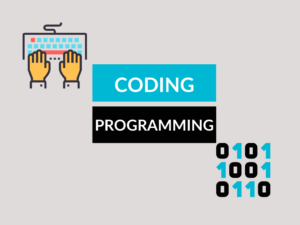Difference Between Throw and Throws
Throw and throws are two keywords commonly used in programming languages, especially in exception handling. While they may sound similar, there are key differences between them. Let’s explore what throw and throws mean, their examples, and their uses.
What is “throw”?
“throw” is a keyword used in programming to explicitly throw an exception. It is used when we want to signal that an exceptional situation has occurred.
Examples of “throw”:
Example 1:
throw new IllegalArgumentException("Invalid argument");
Example 2:
throw new FileNotFoundException("File not found");
Uses of “throw”:
- Throwing custom exceptions
- Handling error conditions
What are “throws”?
“throws” is a keyword used in method declarations to indicate that the method may throw one or more exceptions. It specifies the type of exceptions the method can throw, allowing the caller of the method to handle those exceptions.
Examples of “throws”:
Example 1:
public void readFile() throws IOException, FileNotFoundException {
// Code to read a file
}
Example 2:
public void divide(int a, int b) throws ArithmeticException {
// Code to divide two numbers
}
Uses of “throws”:
- Signaling possible exceptions that a method might throw
- Allowing the caller to handle those exceptions
Differences Table:
| Difference Area | throw | throws |
|---|---|---|
| Keyword | “throw” is a keyword | “throws” is a keyword |
| Usage | Used to explicitly throw an exception | Used in method declarations to indicate possible exceptions |
| Position | Used within a method to throw an exception | Used in method declarations |
| Exception Type | Throws a specific exception | Specifies which exceptions a method may throw |
| Handling | Requires a catch block to handle the thrown exception | Allows the caller to handle the declared exceptions |
| Multiple Exceptions | Only one exception can be thrown at a time | Multiple exceptions can be declared |
| Propagation | Exception is thrown within the same method | Exceptions are propagated to the caller |
| Compile-Time Check | No compile-time check for thrown exceptions | Compile-time check for declared exceptions |
| Checked Exceptions | Can throw both checked and unchecked exceptions | Specifically declares checked exceptions |
| Uncaught Exceptions | Uncaught exceptions terminate the program | Uncaught exceptions propagate to the caller |
Conclusion:
In summary, “throw” is used to explicitly throw exceptions, while “throws” is used in method declarations to indicate possible exceptions. “throw” is used within a method, requires exception handling, and can throw multiple exceptions, while “throws” specifies declared exceptions, allows the caller to handle them, and propagates the exceptions to the caller. The appropriate usage of “throw” and “throws” depends on the desired exception handling approach in your code.
People Also Ask:
Q: Can throw statement be used without throws in the method declaration?
A: Yes, the “throw” statement can be used without the “throws” keyword in the method declaration. However, the thrown exception will need to be handled within the method or by the caller using a try-catch block.
Q: Can we have throws without any throw statements in the method?
A: Yes, the “throws” keyword can be used in method declarations without any “throw” statements within the method body. It specifies that the method can potentially throw exceptions, even if it doesn’t actually throw any.
Q: Do “throw” and “throws” handle exceptions differently?
A: Yes, “throw” is used to explicitly throw exceptions and requires immediate handling within the same method, while “throws” is used to declare potential exceptions and allows the caller to handle them. “throw” deals with the actual throwing of exceptions, whereas “throws” focuses on specifying possible exceptions for a method.
Q: Can a method have both throw and throws keywords?
A: Yes, a method can have both “throw” statements within its body and “throws” keyword in its declaration. The “throw” statement will allow the method to throw exceptions explicitly, while the “throws” keyword specifies the exceptions that the method can potentially throw, allowing the caller to handle them.
Q: Are “throw” and “throws” specific to any programming language?
A: No, “throw” and “throws” are commonly used keywords in several programming languages, including Java, C++, and C#. They serve the same purpose of exception handling, allowing developers to handle exceptional situations effectively.


